Interesting Facts About Iran You Never Knew
Did you know Iran uses a unique solar calendar system, with Nowruz (New Year) celebrating the first day of spring? You'll be surprised to learn that over 60% of Iran's population is under 30, shaping the country's cultural landscape. The art of taarof, a complex social etiquette, governs many interactions. Iran's workweek runs from Saturday to Thursday, with Friday as the weekend. Women make up about 65% of university students, despite facing some restrictions. The ancient qanat water management system, still in use today, showcases Iran's long history of innovation. Iran's culinary scene boasts world-renowned saffron and caviar. There's much more to uncover about this fascinating country.
This post may contain affiliate links. If you make a purchase through these links, I may earn a commission at no additional cost to you. Additionally, portions of this post may be generated using artificial intelligence (AI) technology. While we strive for accuracy, please be aware that AI-generated content may not always be perfect and should be fact-checked when necessary.
The Spatula Scoops
- Iran uses a unique solar calendar system, with Nowruz (Iranian New Year) celebrating the first day of spring for over 3,000 years.
- Over 60% of Iran's population is under 30, significantly influencing cultural trends and social movements.
- Taarof, a complex system of social etiquette, involves polite offers and refusals in daily interactions and business dealings.
- The ancient Qanat water management system, developed over 3,000 years ago, is recognized as a UNESCO World Heritage site.
- Iran produces 90% of the world's saffron and its Almas caviar can cost up to $31,000 per kilogram.
Iran's Unique Calendar System
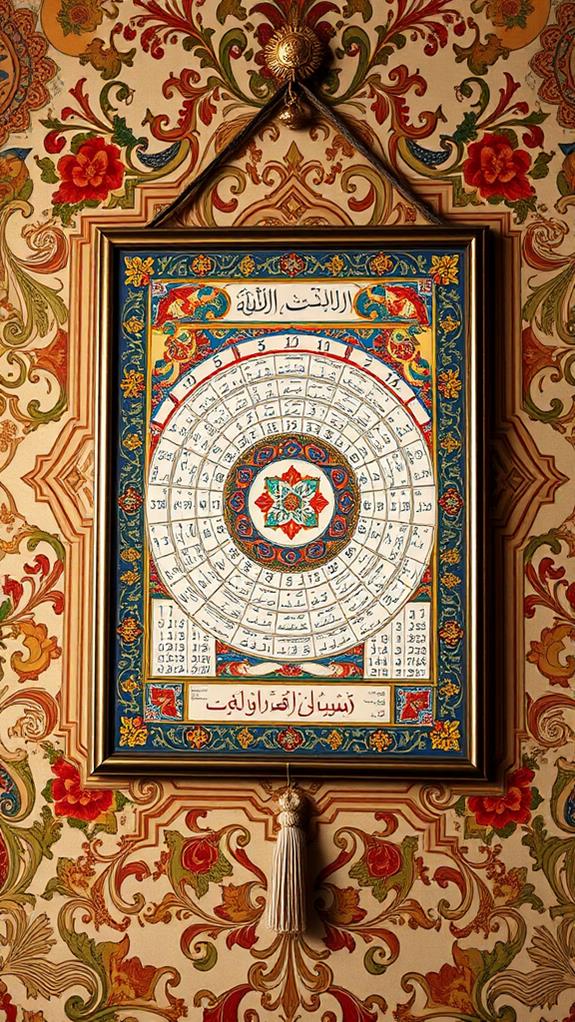
In Iran, you'll find a calendar system unlike any other in the world. The Iranian calendar, also known as the Persian calendar, is based on the Earth's movements around the sun rather than lunar cycles. This unique system consists of 12 months, with a distinct distribution of days: the first six months have 31 days each, the next five have 30 days, and the final month has 29 days (or 30 in leap years).
You'll notice that Iran is the only country that exclusively uses this solar calendar for its official dates. This sets it apart from neighboring nations that follow the Islamic lunar calendar. The Iranian calendar's structure aligns closely with agricultural cycles and seasonal changes, which are deeply ingrained in Iranian culture.
One of the most significant dates in this calendar is Nowruz, the Iranian New Year. It marks the first day of spring and has been celebrated for over three millennia. As you explore Iran, you'll see how events and holidays are scheduled around this calendar, reflecting the country's rich cultural heritage and its connection to natural cycles. This unique timekeeping system is just one of the many fascinating aspects of Iranian culture you'll encounter.
Youth-Driven Demographics
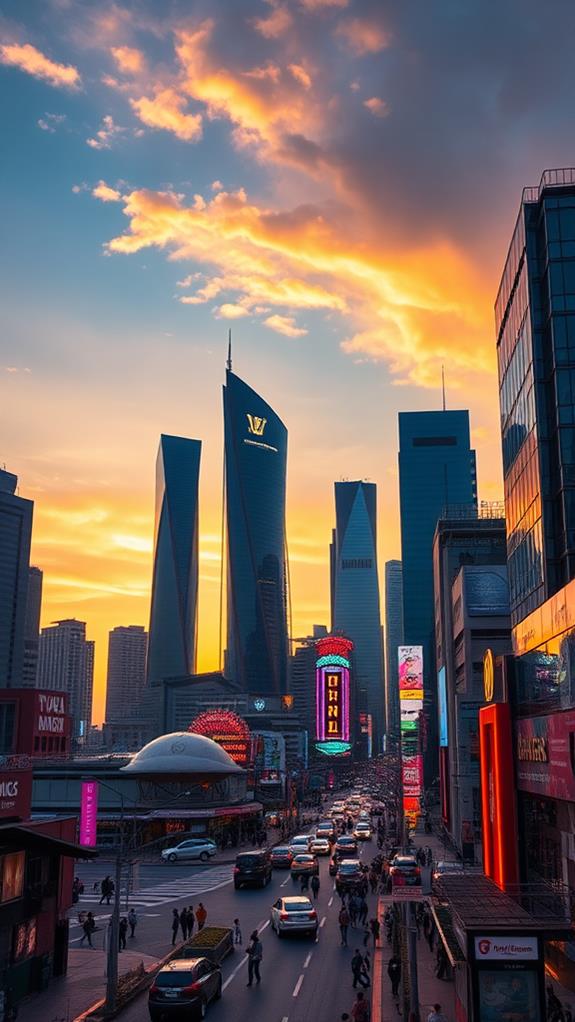
You'll find Iran's demographics are primarily youthful, with over 60% of the population under 30 years old. This youth-driven society faces challenges in its education system, particularly in accommodating the high number of female university students, who make up about 65% of enrollments. The impact of this young population is evident in Iran's evolving cultural landscape, influencing everything from arts and media to social movements and contemporary national identity.
Youthful Population Dominates
A sea of youthful faces dominates Iran's demographic landscape. You'll find that over 60% of the country's population is under 30 years old, shaping Iran's cultural and social fabric. This youthful population isn't a coincidence; it's the result of post-1979 revolution policies encouraging population growth and early marriages. These factors have led to a significant baby boom and large families, contributing to Iran's unique demographic structure.
This youth-driven demographic is reshaping Iran's educational trends and employment sectors. You'll notice:
- Increased participation in higher education
- A surge in youth-led entrepreneurship and startups
- Growing influence of young voices in social and political dialogues
The impact of this youthful population extends beyond numbers. It's evident in Iran's vibrant arts scene, dynamic media landscape, and urban activities. Young Iranians are at the forefront of social movements and cultural expressions, influencing everything from fashion to technology adoption. As you explore Iran, you'll encounter a society where youth culture is not just prevalent but dominant, shaping the nation's trajectory in countless ways.
Education System Challenges
Iran's education system faces unique challenges due to its youth-driven demographics. With over 60% of the population under 30, you'll find that the country's education system is working to meet the diverse needs of this youthful cohort. While Iran boasts one of the highest literacy rates in the region, thanks to compulsory and free primary and secondary education, there are still barriers to overcome.
Here's a quick look at some key education system challenges in Iran:
| Challenge | Impact |
|---|---|
| Gender restrictions | Limited fields for women |
| Adapting to modern standards | Slow integration of new practices |
| STEM demand | Balancing with creativity and critical thinking |
| Research focus | Shifting from traditional methods |
| Youth-centric needs | Updating curricula for relevance |
As you explore the education landscape in Iran, you'll notice that higher education institutions are increasingly emphasizing research. However, they're still grappling with modernizing their approach to align with global standards. For people in Iran, particularly the youth, this means maneuvering a system that's evolving but not yet fully equipped to meet their changing needs and aspirations in a rapidly advancing world.
Cultural Impact of Youth
While education shapes Iran's youth, their influence extends far beyond the classroom. You'll find that over 60% of Iran's population is under 30, creating a youth-driven demographic that's notably impacting cultural trends across the nation. These young Iranians are at the forefront of creative movements, leading the charge in art, music, and literature.
You might be surprised to learn that this youthful population is a result of post-1979 revolution policies emphasizing population growth. Now, these young adults are enthusiastic for change and modernity, steering through cultural restrictions while embracing technology and social media to express their identities and connect with global trends.
The cultural impact of Iran's youth is evident in:
- Youth-led initiatives pushing for social reform
- A thriving underground music scene challenging traditional norms
- Innovative art exhibitions blending modern and traditional elements
As you explore Iran's cultural landscape, you'll notice how these young voices are reshaping societal norms. They're driving conversations about personal freedoms, gender equality, and economic opportunities, all while balancing respect for their rich cultural heritage with aspirations for a more progressive future.
The Art of Taarof
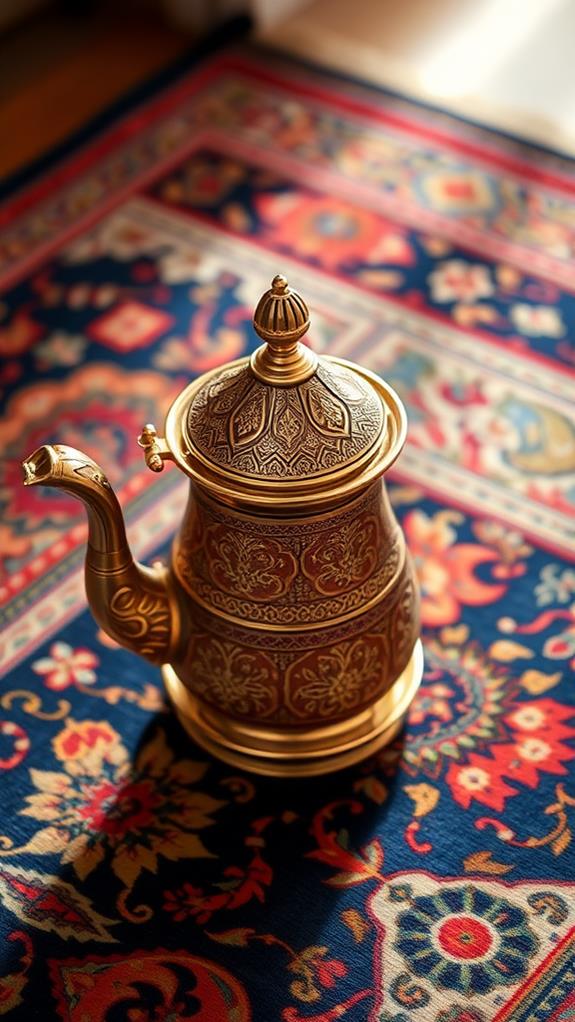
You'll encounter a unique social custom called taarof when visiting Iran, which is deeply ingrained in the culture's emphasis on politeness and respect. This practice involves a ritualistic dance of offers and refusals, where you're expected to decline invitations or gestures multiple times before accepting. To navigate taarof successfully, you'll need to understand common scenarios, such as repeated invitations to take more food at dinner or insisted offers to pay for a meal, and learn to interpret the genuine intentions behind these social exchanges.
Origins and Cultural Significance
Taarof, a cornerstone of Iranian social interaction, is an intricate dance of politeness and hospitality that's woven into the fabric of daily life. This custom, deeply rooted in Persian culture, has origins that stretch back centuries. You'll find taarof permeating every aspect of Iranian society, from casual conversations to business dealings.
The cultural significance of taarof can't be overstated. It's not just about being polite; it's a complex system that reflects core values of Iranian culture:
- Respect and humility
- Generosity and selflessness
- Social harmony and reciprocity
When you're in Iran, you'll encounter taarof in various situations. For example, when offered something, it's customary to refuse three times before accepting. This practice, ingrained in the Persian language, can be confusing for visitors unfamiliar with the custom.
Understanding taarof is essential for traversing Iranian social norms. It's not just about following rules; it's about grasping the underlying principles of respect and generosity. By learning the nuances of taarof, you'll gain deeper insights into Iranian culture and improve your interactions with locals.
Common Taarof Practices
The art of taarof manifests in various common practices throughout Iranian society. You'll encounter this intricate social dance in everyday interactions, where politeness and humility take center stage. When offered a gift or invitation, it's customary to refuse two or three times before accepting. This illustrates your graciousness and adherence to social etiquette.
In commercial settings, you might witness customers engaging in taarof by insisting that sellers keep the change. This practice reflects the prioritization of social niceties over strict financial transactions. Hospitality is another domain where taarof thrives. As a guest, you're expected to initially decline food offers before ultimately accepting, showcasing your appreciation for the host's generosity.
Taarof extends to verbal exchanges as well. When complimented, Iranians often respond with modesty or self-deprecation. This deflection of praise is a way to promote humility and maintain social harmony. As you navigate Iranian culture, you'll find that mastering the nuances of taarof is essential for smooth social interactions and illustrating respect for local customs.
Navigating Social Interactions
Maneuvering social interactions in Iran requires a deep understanding of taarof, a complex system of etiquette that governs polite behavior. When engaging in taarof, you'll often find yourself in a dance of refusals and insistence. For instance, if you're offered food or a gift, it's customary to initially decline. You may need to refuse up to three times before finally accepting, and when you do, a gratuity is expected.
Taarof extends beyond personal interactions to commercial settings. In a shop, you might witness customers initially refusing to pay, not out of unwillingness, but as a sign of respect. This practice can be confusing for outsiders, but it's essential for maneuvering through Iranian social norms.
To successfully engage in taarof:
- Always show respect for social hierarchy, especially acknowledging the oldest person present
- Be prepared for multiple exchanges of polite refusals before reaching an agreement
- Prioritize politeness and social harmony over directness in your interactions
Weekend Customs and Workweek
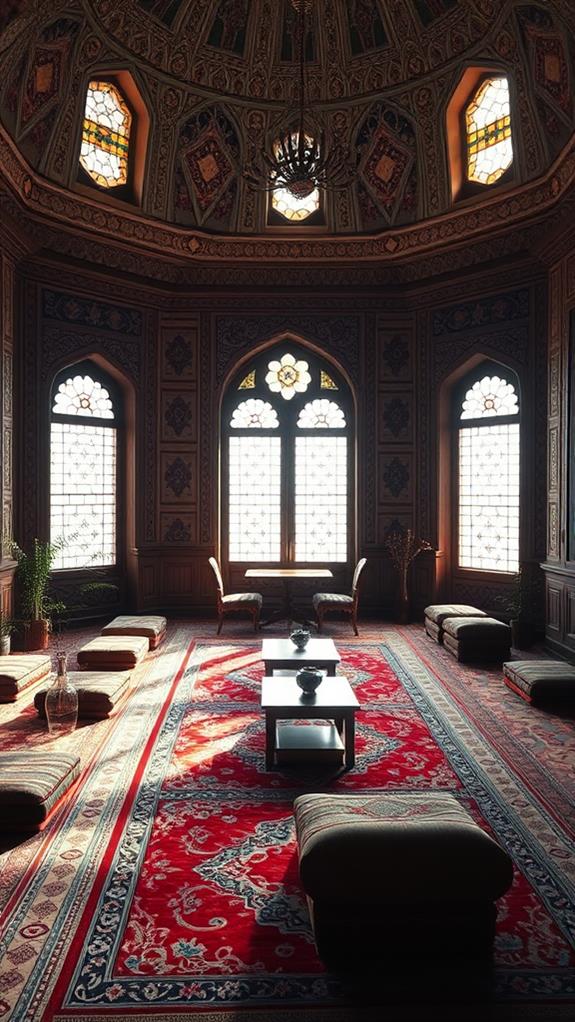
Uniqueness characterizes Iran's workweek structure, setting it apart from many Western countries. You'll find that the Iranian workweek runs from Saturday to Thursday, with Friday serving as the official weekend day. This arrangement aligns with Islamic traditions, emphasizing Friday's significance for congregational prayers.
As you navigate Iran's weekend customs, you'll notice that Thursdays have a distinct rhythm. Banks and government offices typically operate on reduced hours, opening from 07:30 to 13:00. However, in larger cities, you might find shopping malls bustling with activity on both Thursday and Friday.
It's important to note that the educational system follows the same workweek structure. This alignment guarantees consistency across government, business, and educational sectors. Keep in mind that various national and religious holidays can lead to seasonal closures, affecting the workweek's consistency.
Understanding these nuances is vital for effective SEO and content creation targeting Iranian audiences. When developing content strategies, consider the unique timing of Iran's weekend and workweek to optimize engagement and reach. By aligning your content schedule with local customs, you'll enhance your visibility and relevance in the Iranian market.
Women in Higher Education
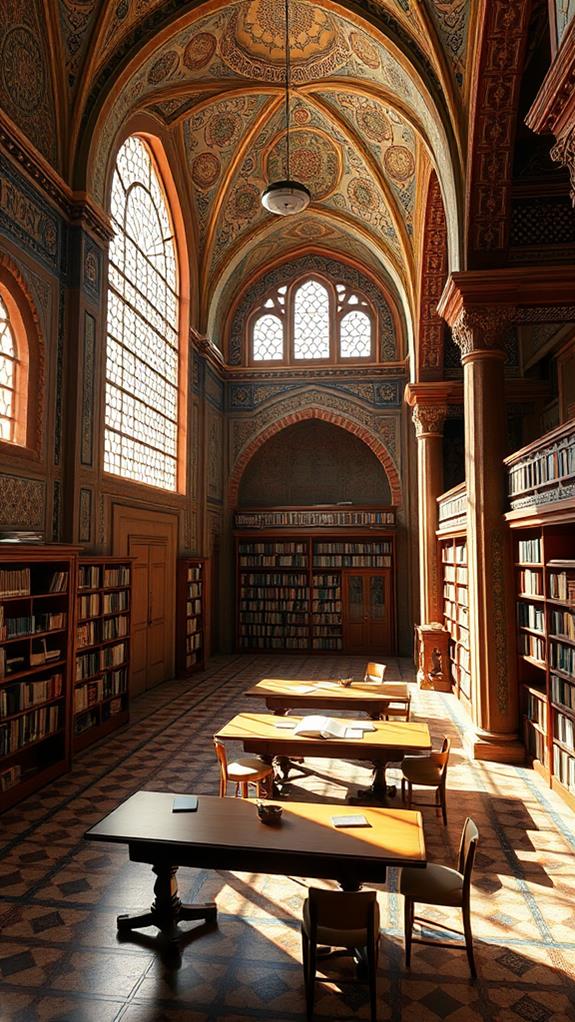
How has Iran's higher education landscape been transformed by women's participation? You might be surprised to learn that women in higher education now represent about 65% of university students in Iran. This significant female presence is reshaping the academic environment and challenging traditional gender roles.
Despite facing certain restrictions, Iranian women have made remarkable strides in education. Their literacy rates are among the highest in the region, contributing to their increasing enrollment in universities. However, it is crucial to recognize that the government still limits women's access to over 70 fields of study, reflecting ongoing challenges in educational equality.
Here are some key points to reflect on regarding women in higher education in Iran:
- State-funded universities provide tuition-free education, increasing accessibility for female students
- Women are encouraged to attend local universities over secular institutions
- Higher literacy rates among women have paved the way for their increased participation in higher education
While progress has been made, there's still room for improvement regarding educational opportunities for women in Iran. The current landscape reflects a complex interplay of cultural, governmental, and societal factors shaping women's educational experiences in the country.
Ancient Innovation: Qanat System
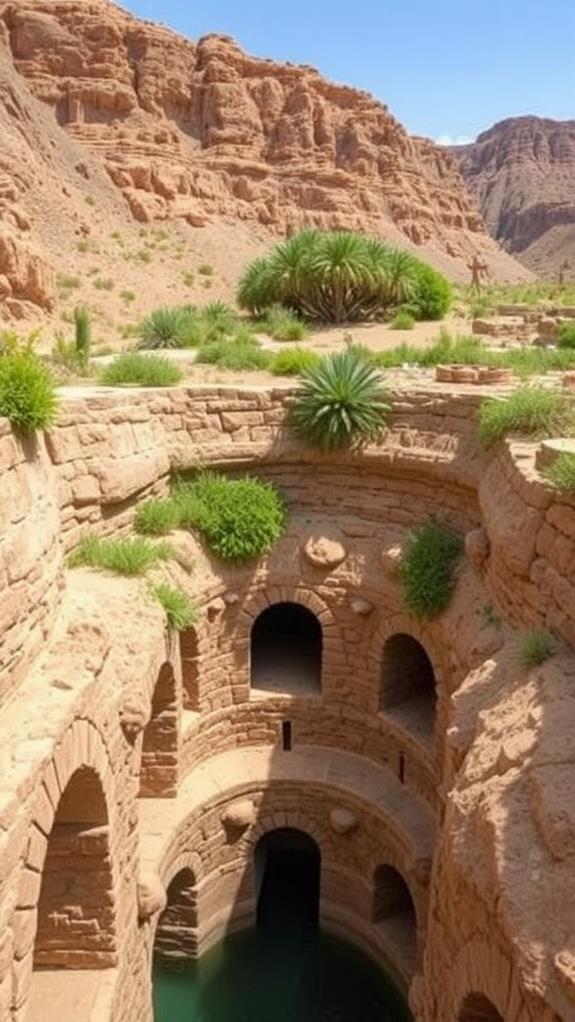
When you think of ancient Persian innovations, the qanat system stands out as a remarkable feat of engineering. This ingenious underground aqueduct, developed over 3,000 years ago, revolutionized water management in arid regions. You'll be amazed to learn that Iran is home to more than 50,000 qanats, showcasing the extensive use of this ancient innovation.
The qanat system consists of a series of vertical shafts connected by gently sloping tunnels. It's designed to transport water from aquifers to the surface using gravity, minimizing evaporation in areas with less than 4 inches of annual rainfall. This sustainable engineering practice optimized the use of limited resources in challenging environments.
You might wonder about the impact of this ancient innovation. Well, it's significant. The qanat system not only facilitated agriculture in desert regions but also supported urban growth by providing a reliable water source. It fundamentally shaped settlement patterns in Iran and earned UNESCO World Heritage status. When you consider the qanat system's 3,000-year history and its continued relevance, you'll appreciate the ingenuity of ancient Persian engineers in creating such a lasting solution.
How Does Hillary Clinton’s Work Relate to Iran?
Hillary Clinton’s work as Secretary of State often intersected with Iran, particularly on issues like nuclear diplomacy and sanctions. Her efforts contributed to laying the groundwork for the Iran nuclear deal. Among hillary clinton surprising facts is her critical role in building international coalitions to address global security concerns, including those involving Iran.
Culinary Treasures and Traditions

Beyond its ancient innovations, Iran boasts a culinary tradition that's as rich and diverse as its history. You'll find that Persian cuisine is a treasure trove of flavors, with saffron, the country's most prized export, often taking center stage. As the world's leading producer of this golden spice, Iran contributes a staggering 90% of the global supply. But that's not all – the nation's culinary treasures extend to the renowned Almas caviar, fetching up to $31,000 per kilo.
When you explore Iranian cuisine, you'll encounter a variety of rice dishes and aromatic stews called "khoresht." These meals often feature lamb, chicken, and an array of vegetables, showcasing the country's diverse ingredients. As you travel across Iran, you'll notice how regional specialties reflect the nation's cultural diversity, from spicy southern dishes to milder northern fare.
Here are three key aspects of Iran's culinary culture:
- Saffron's significance in both cuisine and economy
- The importance of rice and stews in traditional meals
- Regional variations in flavors and ingredients
During celebrations like Nowruz, the Persian New Year, you'll witness how food plays a central role in family gatherings and cultural identity, with elaborate feasts that highlight traditional dishes.
Frequently Asked Questions
What Is Unique to Iran?
Did you know Iran boasts several unique features? You'll find the Iranian solar calendar, used only in Iran, aligning with spring's arrival. There's also "taarof," a distinctive etiquette practice involving polite refusal. Iran dominates the saffron market, producing 90% of the world's supply. You'll marvel at Persian rugs, renowned for intentional imperfections, and the ancient windmills of Nashtifan. These elements showcase Iran's cultural richness, from timekeeping to social customs, agricultural prowess to artistic traditions, making it truly one-of-a-kind.
What Is Iran Best Known For?
You'll find that Iran's best known for its rich cultural heritage and vast natural resources. It's renowned for having the world's second-largest natural gas reserves and third-largest oil reserves. You'll also recognize Iran for its Persian architecture, featuring intricate tile work and grand designs. The country's famous for its saffron production, accounting for about 90% of the global supply. Additionally, Iran's known for its UNESCO World Heritage Sites and the unique social practice of taarof.
What Is Considered Offensive in Iran?
In Iran, you'll want to be mindful of several cultural taboos. Don't show the soles of your feet, as they're considered unclean. Avoid criticizing the government or its leaders, which can lead to serious consequences. Never refuse hospitality when invited to someone's home. Use your right hand for giving or receiving items, as the left is seen as offensive. Public displays of affection between non-related men and women are frowned upon and can result in legal issues or social backlash.
What Is Iran Proud Of?
Imagine a tapestry woven with threads of pride; that's Iran's national identity. You'll find they're proud of their UNESCO World Heritage Sites, showcasing their rich history. They're also proud of their natural resources, being a top producer of oil and gas. Iran's academic achievements shine, with women dominating university enrollment. Their artistic heritage, like intricate Persian rugs, is another source of pride. Finally, Iran's literary tradition, especially in poetry, continues to influence global literature and bolster their cultural identity.





